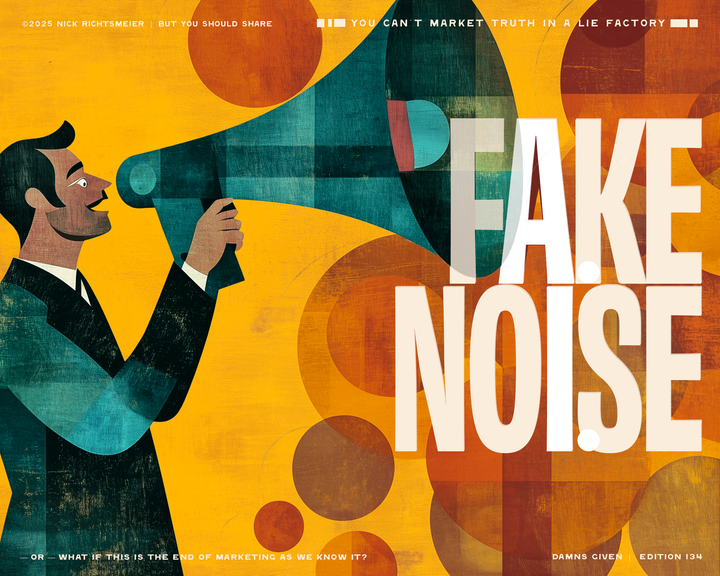Outgrowing your ability to grow
Nothing undermines growth like growth. Businesses hit moments in your life cycle where what worked before starts to calcify and sets you on a downward trend. They are unavoidable but solvable problems. Here's how.

The second you are clear on a critical business decision, the clock starts ticking.
In our experience, it’s about three years, five if you’re lucky. But that decision--be it a great product, your category positioning, or a cultural alignment, the ground underneath you is moving.
And if your decision works? It’s moving even faster.
Because nothing undermines growth like growth.
We hear the critics now. “That sounds stupid. Growth begets more growth!”
Does it? A study of over 400 companies by Harvard Business Review showed that accelerated growth was one of the best indicators for a future decline.
Growth is not only temporary; it can be toxic. Like water consumption, optimism, and an afternoon nap—engines of health and progress not only eventually run out, they end up undermining the success they created.
Businesses hit what researcher Comaford calls “inflection points,” moments in your life cycle where what worked before starts to calcify and sets you on a downward trend. We call them ceilings: systemic limits that you keep bouncing against repeatedly, with no clear sign of reprieve.
Over the years of working with clients and our own experiences as in-house leaders, we’ve become students of these ceilings, their habits, and prediction points. Marketing is often where the pain is, but it takes a deeper look to find the solution.
The good news? They are all completely preventable. No “Acts of God” are to be found. All are dilemmas for leaders to solve from within.
The bad news? All are dilemmas for leaders to solve from within. But, unfortunately, when you’ve been on the inside for a long time, you become, as we say, the flavor of the stew, and with each passing year, it becomes harder and harder for you to see the risks as they compound.
Sustainable growth, which moves through and past these inflection points, is defined by your ability to recognize them and respond. They occur at reliable points across organizations and industries, so let’s dive in.
THE CEILINGS
1. The Founder Ceiling: On the path to mid-seven-figures, nothing is more important than the founder. For good and for ill. The founder’s charisma, clarity, and momentum will drive much of this first burst of revenue, breaking the venture into the top 6% of all businesses. Founders create opportunity, but as companies grow, they also create challenges. As you grow past the “micro” stage with 10+ employees or $3M+ in revenue, the way growth happens has to change.
How You’ll Know It:
- The drive of the founder is as much a liability as an asset.
- It’s no longer “her business”; it’s “our business.”
- The founder can no longer be the lead salesperson
- Not all clients have a relationship with the founder
- New employees feel excluded from the early founding team
2. The Culture Ceiling: You got here through grit and hard work, but that same brute strength and awkwardness will only keep you here. Growth stagnates and sometimes reverses course near the $10 million mark because companies need a more cohesive culture to work together toward a strategic vision.
How You’ll Know It:
- Relational breakage is increasingly the norm. Politics and backchannels are expanding.
- The Founder/CEO is out-of-the-loop. No longer aware of dissent (protected by politics), she often suffers from rose-colored glasses.
- Departmental silos are creating a quagmire of slowness.
- “Marketing” and “Technology” are increasingly seen as magical solutions without clear transformational mandates.
3. The Brand Ceiling: No longer just the sum of its parts, a $30 million revenue company is wholly in that coveted middle-market space, often employing hundreds of team members—1 in 4 American workers. The buzz of “scale” starts to float, and the whispers of “it isn’t like it used to be around here” degrade morale. The complexity of the relational network that is your business has grown exponentially, with it, the opportunity for project breakage and operational debt.
How You’ll Know It:
- Tactics used to grow (marketing and sales methods) create downstream credibility effects.
- You are considering PR as a solution for building a reputation to overcome the above.
- Legacy issues from the previous two ceilings are at a breaking point. “Who are we now?” is the question in everyone’s mind.
- Senior leadership hires are creating churn and tension.
- Overhead costs are soaring, and you can’t figure out why.
- You are considering PE money for the first time.
4. The Enterprise Ceiling: Brands are often at the breaking point here. Public identities built for a tight little market of $25M in revenue now strain at the expansion needed to cross into 9-figures. As a result, brands must reformat (sometimes rebrand) and pick strategic lanes for growth: geographic? product line? customer type? Each comes with consequences and opportunities. The VC model was designed to avoid this step with mergers and buyouts, but for those that retain their independence, it’s time--again--for a reinvention.
How You’ll Know It:
- Strategy decisions are more demanding and require more forethought.
- The time horizon for decision-making is in the years, not months
- An experienced C-suite is required, often leading to turnover or reshuffling of long-term players.
- The relationship between strategy and implementation is the driving force behind outcomes. Project management expertise is essential.
- Capital structure will be a primary strategic factor where you grow next.
PRE-EMPTING STALLED GROWTH
The world is full of quick tips to grow your business. But spend 5 minutes on LinkedIn, and they’ll bury you. Most of them are spawned by marketing hammers in search of nails. Feel the sharp pain on your head pounding you into submission?
You got it. That was a hammer.
But skilled growth through the middle market isn’t about tricks or tactics. On the contrary, obsession over those things is the exact way to grow yourself into a steep decline.
In HBR’s research, 4-5 years of slump and decline followed companies’ highest growth years. Fast growth can be its own demise.
Instead, by understanding the nature of the transition from each stage, you can avoid these roller coasters and learn from your predecessors’ mistakes.
- Changes in the mid-7-figures: The most significant change that has to happen for any business to move through and up the $3 million mark is that the focus of the brand has to shift from founder-driven to customer-centric. Founders, especially charismatic ones, often seem like such an easy way to keep growing the brand. And that’s true till the $3 million mark. But, after that point, the conversation has to move from the groundbreaking ideals of the founder to the love of the brand’s customer. Without that shift, the brand loses relevance, floundering in a look-at-me conversation. Business owners must realize that their personal spotlight can only shine so bright. But a conversation about the customer attracts more customers. And more customers means more revenue.
- Changes through $30 million: The best way to track whether a $10 million company is tooled for growth is employee churn? Company culture has to matter. The brand is big enough now to have an identity of its own – bigger than whoever is in the room. Usually, this means fresh market positioning. You are no longer the upstart. You are among the top 1% of businesses, so act like it. And in all likelihood, the category you rose to the top with (e.g., the RIA space) for the last decade shows signs of wear and tear. You need to differentiate or be disrupted.
- Changes on your way to 9-figures: Let us start by saying that if you’re even considering this, you are in the 1% of businesses ever created. But you literally can’t rest on your laurels here. That, according to the research, is precisely where the mighty fall.
The precariousness of success cannot be overstated. In HBR’s report of brands that fell from the heights:
- 23% were captive to their past success and didn’t pivot in a timely fashion
- 13% failed to manage essential innovation
- 10% abandoned their core strength too quickly.
In short, at this game stage, you’ve got a Goldilocks problem. You can’t be TOO fast to change or TOO slow. Agility is the name of the game.
WHAT’S UP NEXT?

Revenue growth is never just a straight line going up and to the right. And yet, what we’ve often seen strategic plans that map out just that. Think about your C-suite. How do you talk about your future plans?
Is it some version of, “We’re going to do what we’ve done well, just more of it”?
If so, now is the moment to raise the yellow flag of concern. “Generally the same but more” is the one thing we can almost guarantee won’t happen.
We tell our organizations that they need to plan to reposition the company every 3-5 years. Healthy companies are in one of three states:
- Planning for transformation
- Experiencing transformation
- Metabolizing transformation
The best leaders are abandoning the illusion that anything stays the same. It won’t, and neither should you.
You can’t be the business you were yesterday.
As always, if you want a 1:1 discussion about where your business is and how these insights apply, we are happy to talk with no obligation.



